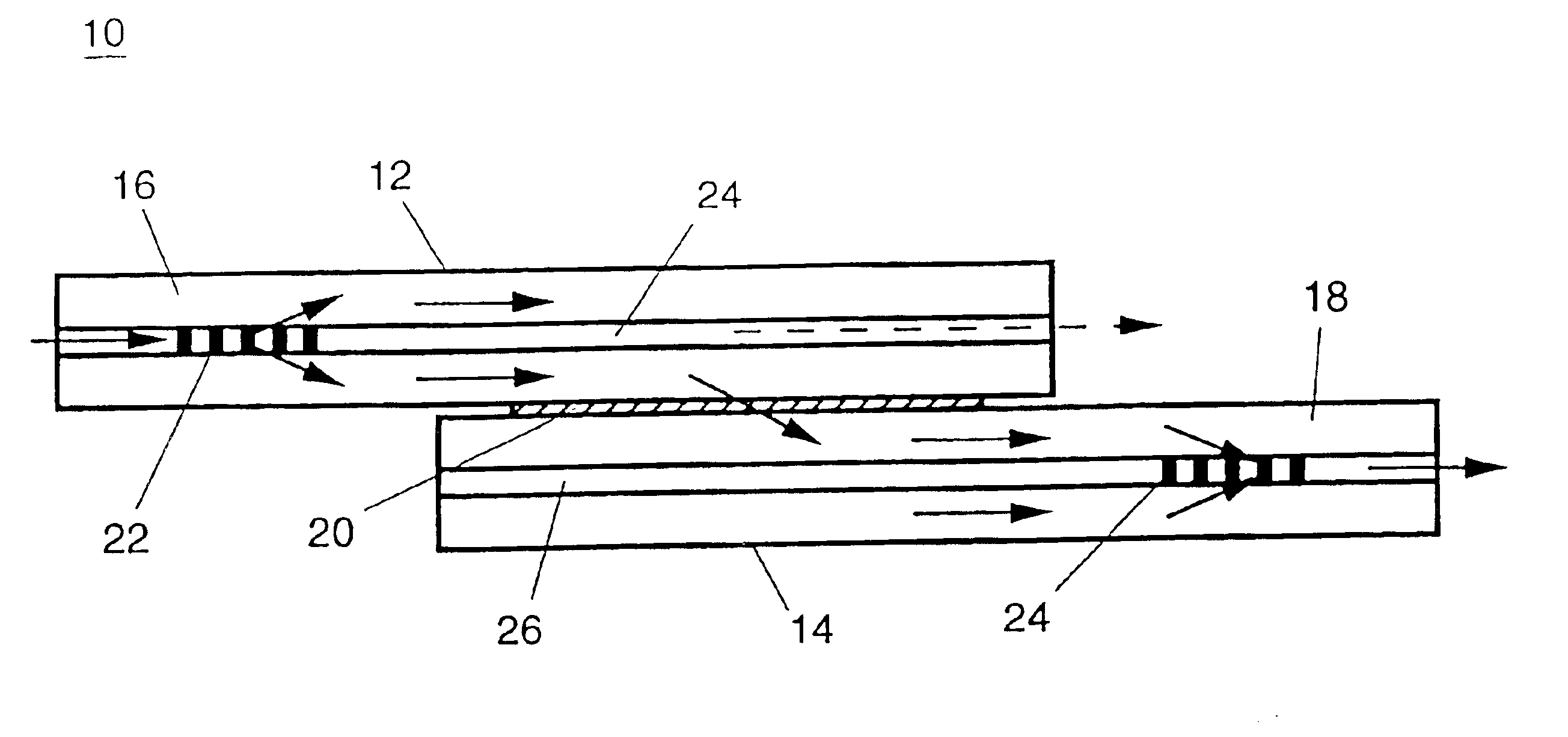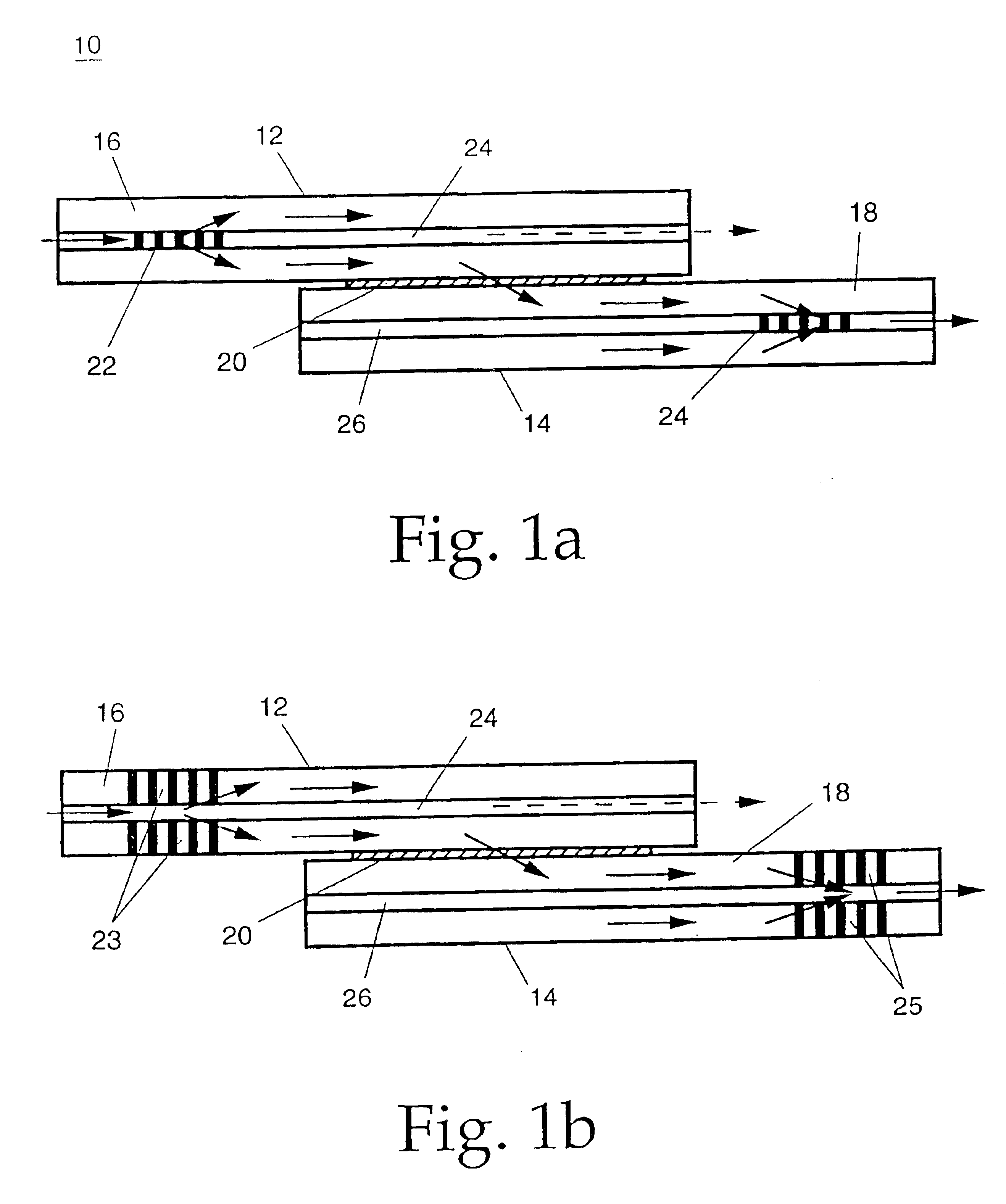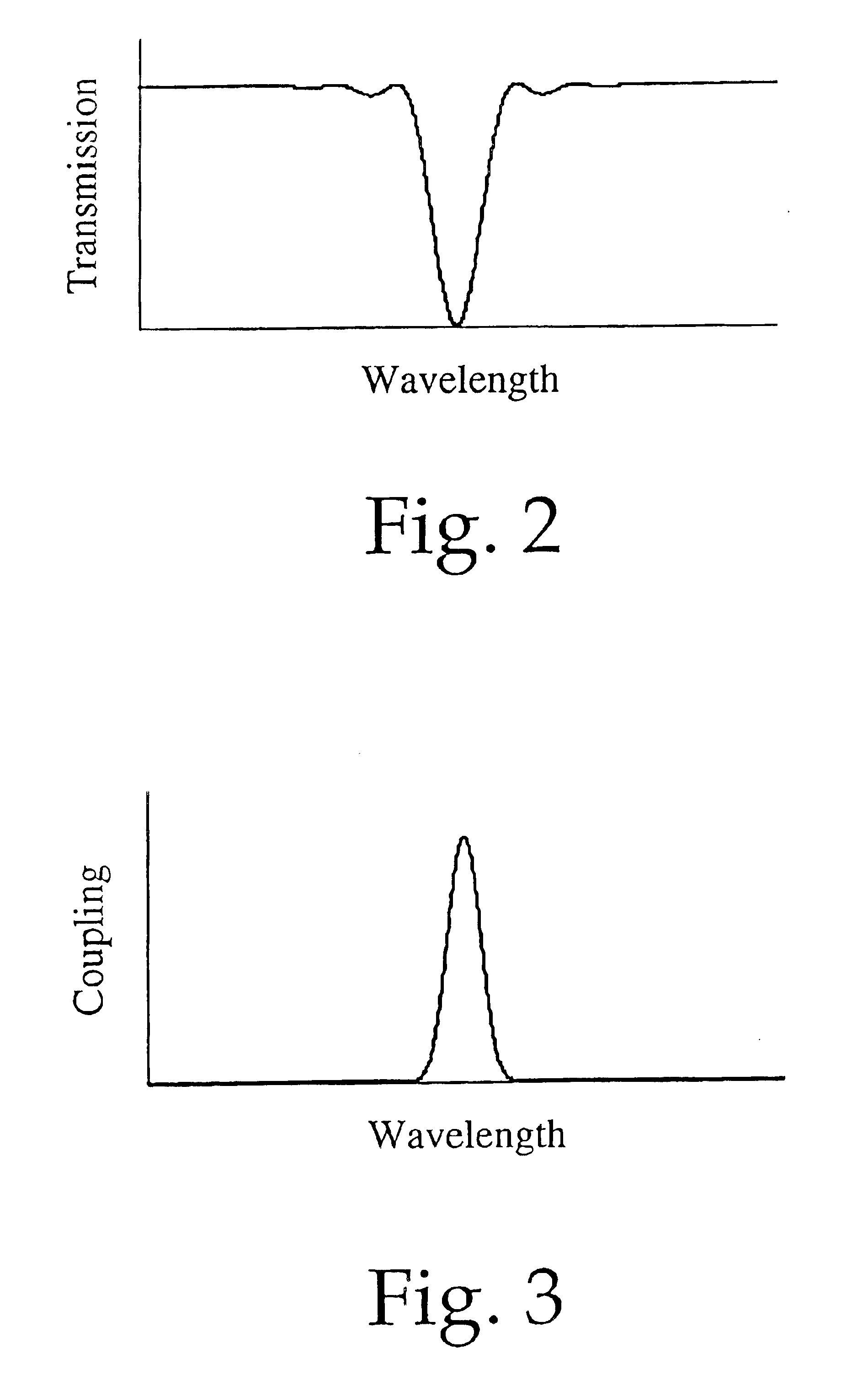Wavelength-selective optical fiber components using cladding-mode assisted coupling
- Summary
- Abstract
- Description
- Claims
- Application Information
AI Technical Summary
Benefits of technology
Problems solved by technology
Method used
Image
Examples
example
To fabricate a working wavelength-selective coupler, a photosensitive fiber (type PS1500H from Fibercore Ltd., U.K.) was used with a numerical aperture NA=0.3, cutoff wavelength λ=1464 nm, and an outer diameter of the cladding d=125 microns. A frequency-doubled argon laser (model # Innova SHG from Lexel Laser, Inc., California) emitting light in continuous-wave mode at 244 nm was used to fabricate the periodic perturbations as long-period gratings in two optical fibers. The fibers were each exposed along their length over time with a square-wave pattern of UV light, so that the lengths of the exposed regions were half of the grating period and each exposed region received ˜8 kJ / cm2 of UV light at 244 nm. This UV exposure produced a long-period grating in the core of each fiber with period A=74 microns and length L=2.5 cm. Each grating coupled 98% of light at the resonant wavelength 1549.0 nm from the single core mode into a cladding mode of the same fiber. The two fibers were then a...
PUM
 Login to View More
Login to View More Abstract
Description
Claims
Application Information
 Login to View More
Login to View More - R&D
- Intellectual Property
- Life Sciences
- Materials
- Tech Scout
- Unparalleled Data Quality
- Higher Quality Content
- 60% Fewer Hallucinations
Browse by: Latest US Patents, China's latest patents, Technical Efficacy Thesaurus, Application Domain, Technology Topic, Popular Technical Reports.
© 2025 PatSnap. All rights reserved.Legal|Privacy policy|Modern Slavery Act Transparency Statement|Sitemap|About US| Contact US: help@patsnap.com



